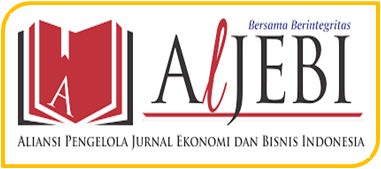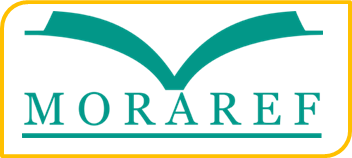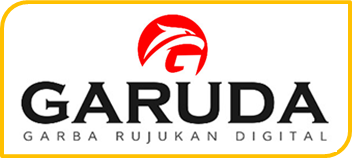Author Guidelines
1. General Author Guidelines
All scriptures must be submitted to Maliki Islamic Economics Journal Editorial Office by Online Submission at E-Journal portal address: https://ejournal.uin-malang.ac.id/index.php/m-iecjournal , where author register as Author and/or offered as Reviewer by online. If authors have any problems on the online submission, please contact Editorial Office at the following email m-iecjournal@uin-malang.ac.id
2. Paper Template
All paper should be prepared according to the following author guidelines in the MS Word article template. Please download paper template in: PAPER TEMPLATE
3. Reviewing of Papers
If the content and format of the submitted essay is seen as appropriate by the editors, the paper will then be sent out for 'blind review' by independent referees. Revisions may be required in the light of referees' comments before a decision is made to accept or reject the paper.
4. Revision of Papers
All paper sent back to the authors for revision should be returned to the editor without delay. Revised articles can be sent to editorial office through the Online Submission Interface. The revised manuscripts returned later than three months will be considered as new submissions.
5. Editorial Office of Maliki Islamic Economics Journal
All correspondences should be sent to the following Editorial Office:
Faculty of Economics
UIN Maulana Malik Ibrahim Malang
Jl. Gajayana, No. 50, (+62341) 558881
E-mail: m-iecjournal@uin-malang.ac.id
6. Guideline for Online Submission
Author should first register as Author and/or is offered as Reviewer through the following address: Online Submissions
Author should fulfil the form as detail as possible where the star marked form must be entered. After all form textbox was filled, Author clicks on “Register” button to proceed the registration. Therefore, Author is brought to online author submission interface where Author should click on “New Submission”. In the Start a New Submission section, click on “’Click Here’: to go to step one of the five-step submission process”. The following are five steps in online submission process:
Step 1 - Starting the Submission: Select the appropriate section of journal, i.e. Original Research Articles, Review Article, or Short Communication. Thus, author must check-mark on the submission checklists. Author may type or copy-paste Covering Letter in Letter to Editor.
Step 2 – Uploading the Submission: To upload a paper to this journal, click Browse on the Upload submission file item and choose the manuscript document file (.doc/.docx) to be submitted, then click "Upload" button until the file has been uploaded.
Step 3 – Entering Submission’s Metadata: In this step, detail authors metadata should be entered including marked corresponding author. After that, paper title and abstract must be uploaded by copying the text and paste in the textbox including keywords.
Step 4 – Uploading Supplementary Files: Supplementary file should be uploaded including Covering/Submission Letter. Therefore, click on Browse button, choose the files, and then click on Upload button.
Step 5 – Confirming the Submission: Author should final check the uploaded manuscript documents in this step. To submit the paper to Maliki Islamic Economics Journal, click Finish Submission button after the documents is true. The corresponding author or the principal contact will receive an acknowledgement by email and will be able to view the submission’s progress through the editorial process by logging in to the journal web address site.
After this submission, Authors who submit the paper will get a confirmation email about the submission. Therefore, Authors are able to track their submission status at any time by logging in to the online submission interface. The submission tracking includes status of manuscript review and editorial process.
7. User Rights
All aricles published Open Access will be immediately and permanently free for everyone to read and download.
8. Preparation Guideline of texts
8.1. General Organization of Paper
The paper will be published in Maliki Islamic Economics Journal after peer-reviewed process and decided “Accepted” by Editor. The final paper layout will be reproduced by Editorial Office of M-IEC Journal. The final paper layout in PDF type will be published first in “Article in Press” pre-issue.
Paper document submitted to this journal (in MS Word) should be arranged as follow:
- Body text of paper article
- Figure Captions and Table Captions
All illustrations of any kind must be submitted as sequentially numbered figures, one to a page. Although high-resolution images are not required for the initial refereeing stage, if the essay is subsequently selected for publication, then all figures and tables will need to be provided at the highest quality in digital format. When symbols, arrows, numbers or letters are used to identify parts of illustrations they must be clearly identified by a key in the figure legend, rather than in the figure itself. Similarly, internal scales, staining or processing of the figure must be explained where appropriate. Figure legends should be listed sequentially on a separate page. In all cases where the author is not the owner of the copyright of the figures, written permission must be obtained from the copyright holder(s) to reproduce the figures in this journal.
Each table must be typed, and consecutively numbered. They should have a brief informative title placed as a heading. Tables should be under stable without reference to the text, but they should be referred to in the text. Explanatory caption should be brief and placed beneath the table. Please note that numbering of tables should be differ from the numbering of figures.
Paper content should, in general, be organized in the following order: Title; Authors Name; Authors Affiliation; Abstract; Keywords; Introduction; Hypotheses; Method (for research based articles); Content/Results and Discussion; Conclusions; and References.
8.2. Paper Tittle
This is your opportunity to attract the reader’s attention. Remember that readers are the potential authors who will cite your article. Identify the main issue of the paper. Begin with the subject of the paper. Do not contain infrequently-used abbreviations.
The title of the paper must be concise, specific, informative, and complete.
8.3. Authors Name and Affiliations
Write Author(s) names without title and professional positions such as Prof, Dr, Production Manager, etc. Do not abbreviate your last/family name. Always give your First and last names (Full Name). Write clear affiliation of all Authors. Affiliation includes: name of university, country, include email address.
8.4. Abstract and Keywords
Abstract should stand alone, means that no citation in abstract. Consider it the advertisement of your article. Abstract should tell the prospective reader what you did and highlight the key findings. Avoid using technical jargon and uncommon abbreviations. You must be accurate, brief, clear and specific. Use words which reflect the precise meaning, Abstract should be precise and honest, summarizing the significant points of the paper. Please follow word limitations (200 words).
8.5. Introduction
In Introduction, Authors should state the objectives of the work at the end of introduction section. Before the objective, Authors should provide an adequate background, and very short literature survey in order to record the existing solutions/method, to show which is the best of previous researches, to show the main limitation of the previous researches, to show what do you hope to achieve (to solve the limitation), and to show the scientific merit or novelties of the paper. Avoid a detailed literature survey or a summary of the results. The introduction should clearly state the purpose of the paper. It should include key references to appropriate work but should not be an historical or literature review.
8.6. Literature Review
The literature review contains a list of references of all types such as books, articles, dissertations, theses, and other scientific works. Referral and citation using enclosed reference techniques (name, year of publication: page). Literature review uses standardized reference writing applications such as Zotero, Mendeley or others.
8.7. Hypothesis (Optional)
A supposition or explanation (theory and empirical) that is provisionally accepted in order to interpret certain events or phenomena, and to provide guidance for further investigation. A hypothesis may be proven correct or wrong and must be capable of refutation. If it remains unrefuted by facts, it is said to be verified or corroborated.
8.8. Research Method (for research based articles)
The methods section describes the rationale for the application of specific procedures or techniques used to identify, select, and analyze information applied to understanding the research problem, thereby, allowing the reader to critically evaluate a study’s overall validity and reliability.
8.9. Finding and Discussion
Content is the body of paper, consist of sub title that representing discussion of the paper. Results should be clear and concise. The results should summarize (scientific) findings rather than providing data in great detail. The discussion should explore the significance of the results of the work, not repeat them. A combined Results and Discussion section is often appropriate. Avoid extensive citations and discussion of published literature.
In discussion, it is the most important section of your article. Here you get the chance to sell your data. Make the discussion corresponding to the results, but do not reiterate the results. Often should begin with a brief summary of the main scientific findings (not experimental results). The following components should be covered in discussion: How do your results relate to the original question or objectives outlined in the Introduction section (what)? Do you provide interpretation scientifically for each of your results or findings presented (why)? Are your results consistent with what other investigators have reported (what else)?
8.10. Conclusion
Conclusions should answer the objectives of research. Tells how your work advances the field from the present state of knowledge. Without clear Conclusions, reviewers and readers will find it difficult to judge the work, and whether or not it merits publication in the journal. Do not repeat the Abstract, or just list experimental results. Provide a clear scientific justification for your work, and indicate possible applications and extensions. You should also suggest future experiments and/or point out those that are underway.
8.11. References
To writing citation and bibliography in your article, please use a reference software like Mendeley, Zotero, etc to make the citation work easier. All notes must appear in the text as citations. A citation usually requires only the last name of the author(s), year of publication, and (sometimes) page numbers. The bibliographical style in Maliki Islamic Economics Journal uses American Physicology Association (APA) style.
9. Conventions
Use only recommended SI units. Numerals should be used for all numbers of two or more digits, and for single digits when attached to units of measure. Abbreviations should be defined in parentheses after their first mention in the text in accordance with internationally agreed rules.


























